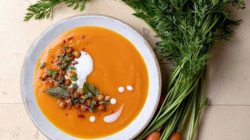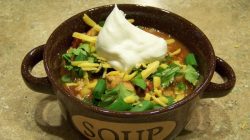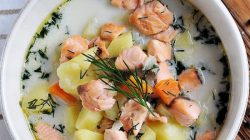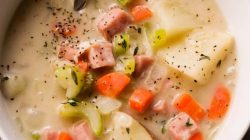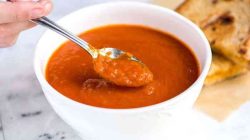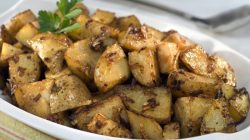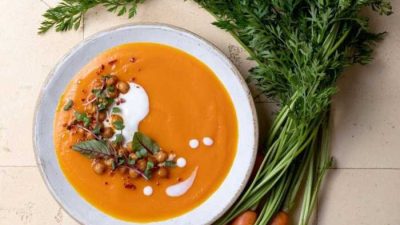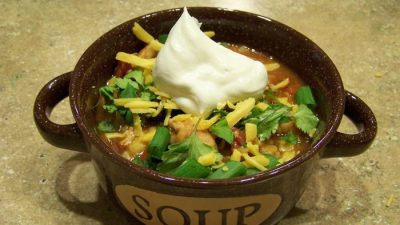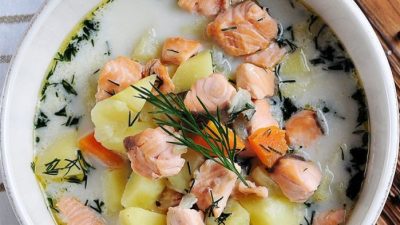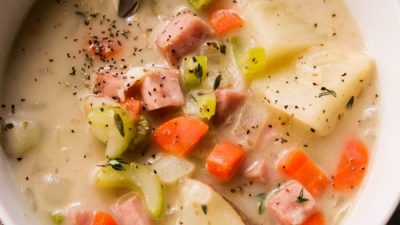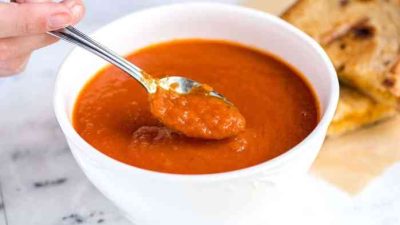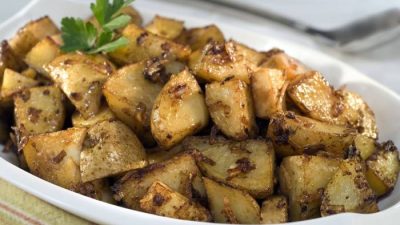Beef Noodle Soup: A Global Culinary Journey
Recipe beef noodle soup – Beef noodle soup, a comforting and flavorful dish, boasts a rich tapestry of regional variations. From the delicate broth of Vietnamese Pho to the robust flavors of Chinese Beef Noodle Soup, this culinary exploration delves into the diverse techniques, ingredients, and cultural nuances that define this beloved dish. We will explore various recipes, ingredient options, cooking methods, serving suggestions, and nutritional aspects to provide a comprehensive understanding of this globally cherished food.
Regional Variations of Beef Noodle Soup
The following table highlights five distinct regional styles of beef noodle soup, showcasing their unique ingredients and preparation methods. Note that these are representative recipes and variations exist within each region.
| Recipe Name | Ingredients | Broth Preparation | Key Spices & Flavors |
|---|---|---|---|
| Vietnamese Pho | Beef broth, rice noodles, thinly sliced beef (often ribeye), star anise, cinnamon, cloves, ginger, fish sauce, onions | Slow simmering for hours to extract maximum flavor; often involves a combination of bones and meat. | Sweet, savory, subtly spiced with aromatic herbs and spices. |
| Chinese Beef Noodle Soup | Beef broth, egg noodles, beef brisket, soy sauce, Shaoxing wine, ginger, garlic, scallions, often includes bok choy or other greens. | Simmering with aromatics, often including a combination of light and dark soy sauce for color and depth of flavor. | Savory, umami-rich, with a balance of sweet and salty notes. |
| Korean Seolleongtang | Beef bone broth, short ribs, radish, salt, pepper, often served with kimchi and other side dishes. | Long simmering of ox bones and beef to create a milky, rich broth. Minimal spices are used to allow the natural beef flavor to shine. | Clean, rich, milky, and subtly savory. |
| Japanese Gyudon (Beef Bowl with Noodles) | Beef broth (often dashi-based), udon noodles, thinly sliced beef, soy sauce, mirin, sugar, scallions, ginger | Simmering with soy sauce, mirin, and sugar to create a sweet and savory sauce. | Sweet and savory, umami-rich, with a balance of sweet and salty notes. |
| Thai Beef Noodle Soup (Kuay Teow Reua) | Beef broth, flat rice noodles, beef meatballs, tomatoes, garlic, chili, fish sauce, palm sugar, lime juice. | Simmering with aromatics and spices; often includes a combination of beef and pork bones for a richer broth. | Savory, spicy, sour, and slightly sweet. |
Key differences in broth preparation techniques include the type of beef used (bone-in vs. boneless), the length of simmering time, and the addition of aromatics and spices. Vietnamese Pho emphasizes delicate aromatics, while Chinese Beef Noodle Soup utilizes a richer blend of soy sauces and spices. Korean Seolleongtang focuses on the natural flavor of the beef bones, minimizing added spices.
Beef Selection and Noodle Alternatives
The choice of beef significantly impacts the final flavor of the soup. Different cuts offer varying textures and flavor profiles. Additionally, exploring alternative noodles can add textural diversity.
Crafting a hearty beef noodle soup requires careful attention to broth and noodle quality. For a contrasting yet equally comforting experience, consider exploring the creamy sweetness of panera bread recipes butternut squash soup ; its rich flavor profile offers a fascinating culinary counterpoint. Returning to our beef noodle soup, remember that simmering the broth for an extended period unlocks its full potential.
Beef Cuts:
- Brisket: Offers rich flavor and tender texture after long simmering.
- Short Ribs: Yields a flavorful and intensely rich broth.
- Chuck Roast: A budget-friendly option that becomes tender with slow cooking.
- Ribeye: Provides a leaner, more delicate flavor, ideal for slicing thinly and adding towards the end of cooking.
- Oxtail: Contributes a deep, gelatinous richness to the broth.
Noodle Alternatives:
- Udon Noodles (Japanese): Thick, chewy wheat noodles, perfect for heartier soups.
- Somen Noodles (Japanese): Thin, delicate wheat noodles, offering a lighter texture.
- Rice Vermicelli: Thin, translucent rice noodles, ideal for soups with lighter broths.
Common Vegetables and Their Benefits:
- Carrots: Sweetness and Vitamin A.
- Celery: Adds savory notes and Vitamin K.
- Onions: Depth of flavor and antioxidants.
- Bok Choy: Nutritious greens with Vitamins A and C.
- Mushrooms: Umami flavor and B vitamins.
Broth Preparation Methods and Techniques
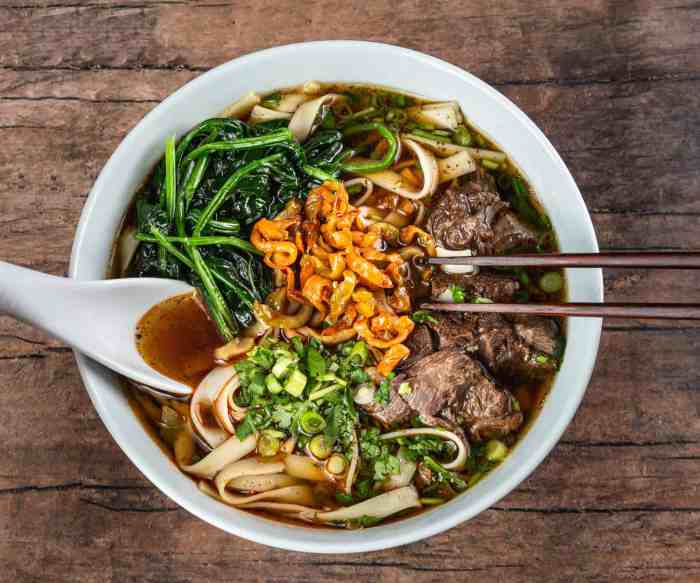
Source: pressurecookrecipes.com
Three common methods for preparing beef broth are simmering, pressure cooking, and slow cooking. Each yields a slightly different result.
Simmering: This traditional method involves gently heating the broth over low heat for an extended period, resulting in a rich, flavorful broth. It is time-consuming but yields the best flavor extraction.
Pressure Cooking: This method significantly reduces cooking time, producing a flavorful broth in a fraction of the time. However, the intense heat can sometimes result in a slightly less nuanced flavor profile compared to simmering.
Slow Cooking: Ideal for tenderizing tougher cuts of beef, slow cooking produces a deeply flavorful broth with extremely tender meat. It is time-consuming, but the results are worth it.
Browning the beef before adding it to the broth is crucial. This process enhances the flavor and creates a richer, deeper color in the finished soup. It develops the Maillard reaction, which contributes significantly to the overall taste.
Step-by-Step Guide for Perfect Beef Noodle Soup:
- Brown beef cubes in a large pot or Dutch oven until browned on all sides.
- Add aromatics (onions, ginger, garlic) and sauté briefly.
- Add beef bones (optional), water, and bring to a boil.
- Reduce heat to low, simmer for several hours (or use pressure cooker/slow cooker), skimming off any foam that rises to the surface.
- Strain the broth, removing any solids.
- Return the broth to the pot. Add noodles according to package directions.
- Add sliced beef (if using a tender cut like ribeye) during the last few minutes of cooking.
- Season to taste with salt, pepper, and any other desired spices.
- Serve hot, garnished as desired.
Serving Suggestions and Variations
The following table showcases three unique variations of beef noodle soup, highlighting different toppings and flavor profiles.
| Variation | Description | Suggested Toppings | Flavor Profile |
|---|---|---|---|
| Spicy Beef Noodle Soup | Adds chili oil or gochujang for a spicy kick. | Chili oil, sliced chilies, bean sprouts, cilantro | Savory, spicy, and warming. |
| Vegetarian Beef Noodle Soup | Uses mushrooms, tofu, or other plant-based proteins to mimic the texture and flavor of beef. The broth is made with vegetable stock. | Mushrooms, tofu, bok choy, scallions, bean sprouts | Savory, hearty, and plant-based. |
| Fusion Beef Noodle Soup (e.g., Thai-Vietnamese) | Combines elements of Thai and Vietnamese flavors, incorporating fish sauce, lime juice, and chili. | Lime wedges, cilantro, basil, bean sprouts, chili flakes | Savory, tangy, and slightly spicy. |
Visually Appealing Garnishes:
- Cilantro-Lime Garnish: Fresh cilantro sprigs and lime wedges arranged artfully on top of the soup.
- Chili-Scallion Garnish: Sliced fresh chilies and thinly sliced scallions, arranged in a visually appealing pattern.
- Bean Sprout-Carrot Garnish: Blanched bean sprouts and shredded carrots, creating a colorful and textural contrast.
Nutritional Information and Health Considerations, Recipe beef noodle soup

Source: tasteofhome.com
A standard serving of beef noodle soup (approximately 1.5 cups) can contain approximately 300-400 calories, 20-30 grams of protein, 30-40 grams of carbohydrates, and 10-15 grams of fat. These values can vary widely depending on the ingredients used.
Regular consumption of beef noodle soup can provide essential nutrients like protein and iron. However, high sodium content is a potential drawback. To reduce sodium, use less soy sauce or salt, and incorporate more fresh vegetables and herbs. To increase nutritional value, include a wider variety of vegetables and leaner cuts of beef.
General Inquiries: Recipe Beef Noodle Soup
Can I use leftover beef roast for the soup?
Yes, leftover beef roast can add depth of flavor. Shred or cube it before adding to the broth during the last 30 minutes of cooking.
How long can I store leftover beef noodle soup?
Store leftover soup in an airtight container in the refrigerator for up to 3-4 days. Reheat gently on the stovetop or in the microwave.
What are some good vegetarian alternatives?
Substitute beef broth with vegetable broth and use mushrooms, tofu, or hearty vegetables like carrots and potatoes for protein and texture.
Can I freeze beef noodle soup?
Yes, beef noodle soup freezes well. Allow it to cool completely before freezing in airtight containers for up to 2-3 months.

